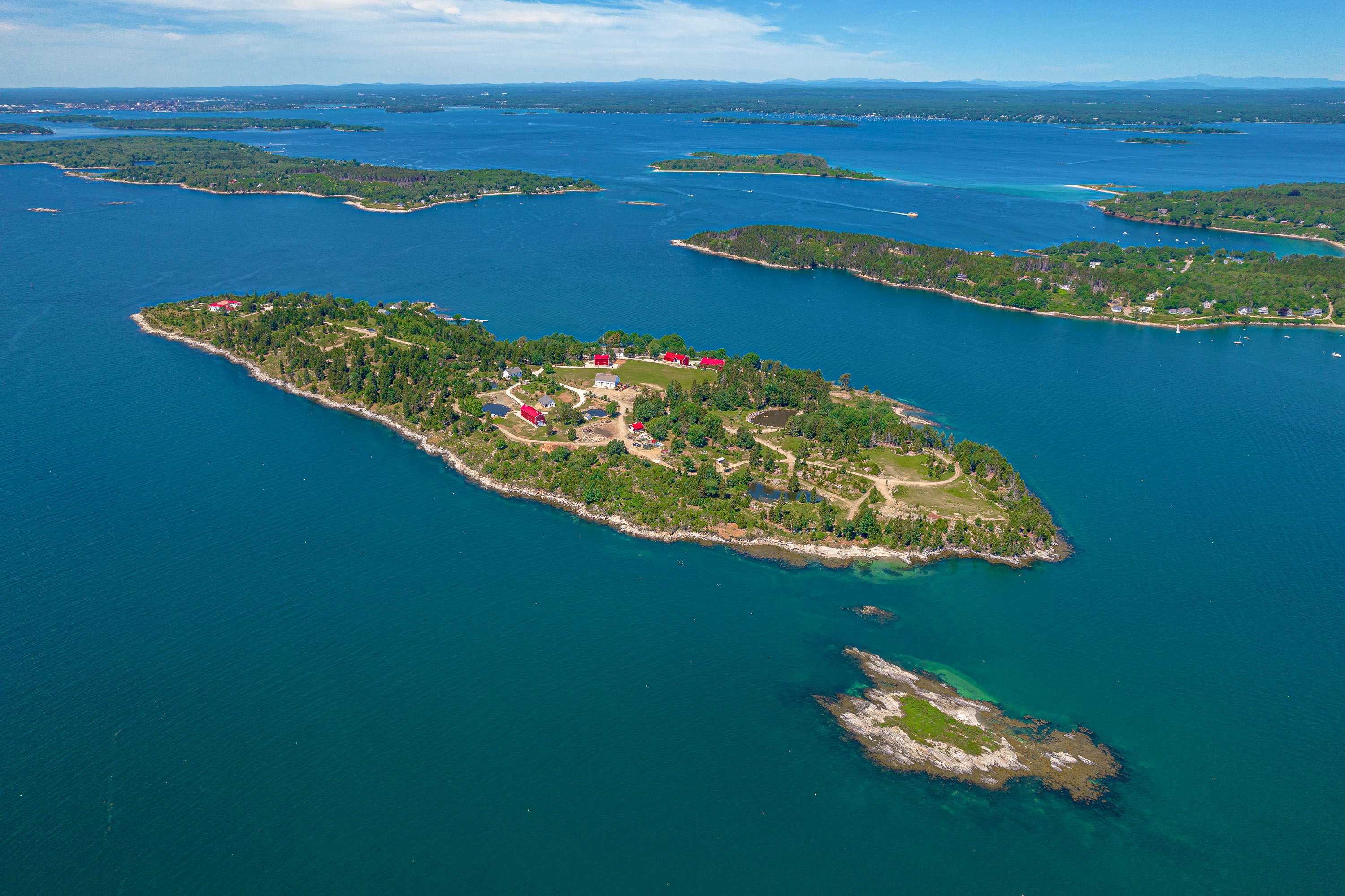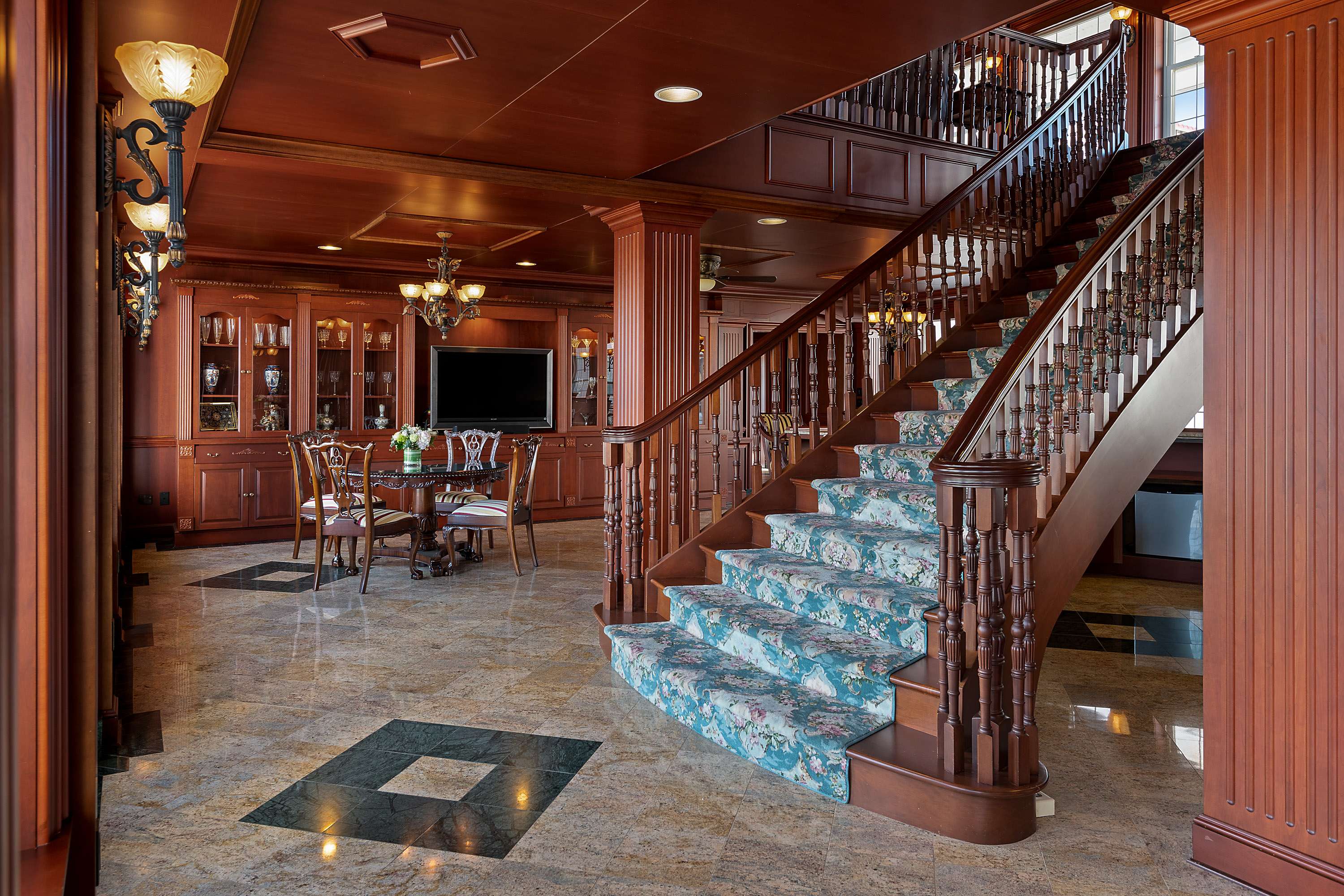
Private Casco Bay island with storied family compound sells for $7M
 Courtesy / Peter G. Morneau
The 86-acre Hope Island has been developed over the past three decades as a family compound anchored by a 11,658-square-foot main house and landscaping.
Courtesy / Peter G. Morneau
The 86-acre Hope Island has been developed over the past three decades as a family compound anchored by a 11,658-square-foot main house and landscaping.
A Casco Bay island that is part of the municipality of Chebeague Island and was listed for $10.5 million has been sold for $7 million, according to public records.
The deal for the 86-acre Hope Island came after a relatively short 48 days on the market and was the second-highest priced residential sale in Maine this year, the broker said. The deal closed Sept. 7, and was announced recently.
“It went under contract relatively quickly,” Jasmin Moulton of Legacy Properties Sotheby’s International Realty told Mainebiz. “I think that speaks to the current state of the market and the marketing I did alongside my company.”

A trust that represents the estate of John and Phyllis Cacoulidis, who developed the island as a family compound, sold the island to Edward Mylett, of California, Moulton said.
Moulton represented both buyer and seller in the sale.
The No. 1 single-family residential sale was a Sebago Lake region estate at 64 Sunset Chimneys Road in Raymond, which sold for $8.5 million, said Moulton.
Market value
Although the purchase price was below list, it did come in at market value, she said.
“It’s a unique asset,” she said. “The prospective buyer pool for a property like this is very narrow. It takes some creative marketing.”
The campaign included a focus on lifestyle, offering an opportunity for “privacy and exclusivity” and a venue for social gatherings and remote work, while still being near Portland’s retail, transportation and service amenities.
“I wanted to tell the story of Hope Island,” Moulton said. “There’s so much out there.”

Queries came from as far as California and included a couple of local interested parties as well. The listing generated four or five showings, which is considered a good amount for the type of property, she said.
“Many of them were interested in purchasing the island from a hospitality angle, to create a high-end bed-and-breakfast,” she said.
But conversations with the seller, she said, made it clear that they preferred a buyer who would keep the island as a family compound.
Significant infrastructure
The island, a short boat ride from Portland, came with significant infrastructure.
An 11,658-square-foot main house features five gas fireplaces, a chef’s kitchen with custom cherry cabinetry and polished granite countertops, custom wainscoting and millwork, floating staircase, stone courtyard, multiple balconies and stone patios, wet bars, circular polished stone and brass bar, executive office with half-bath and double-sided gas fireplace, polished stone flooring and radiant heat.

There are two guest houses, totaling 7,268 square feet. A 600-square-foot tavern has a cathedral ceiling with Tiffany chandeliers. A 457-square-foot chapel has a gabled roof and steeple, cathedral ceiling and brass chandeliers.
A boathouse and barn total 8,268 square feet and have five apartments for employees. The barn has nine stalls with water service. Another 5,100-square-foot horse barn comes with a hayloft, feed room, harness room and another 10 animal stalls; the hayloft is accessed by spiral staircase and has a two-way conveyor.

Other structures include cold storage buildings, an equipment garage and three avian houses for chickens and peacocks.
Water access includes a deepwater dock, reinforced concrete barge landing ramp and six moorings. There are reinforced concrete roads.
Electricity is provided through a submarine electric cable from nearby Long Island. Buildings that are equipped with plumbing have individual septic systems. Water is supplied via 15 drilled wells. Twenty-five 1,000-gallon tanks provide propane storage.
Other amenities include nine ponds, sandy and rocky beaches, fenced dog run, generator house, and recycling/trash building.
Can-do owners
The island was developed by John and Phyllis Cacoulidis, co-founders and owners of a New York real estate investment and development business, Grand Metro Builders.
One of Grand Metro’s biggest projects, in the 1970s, was the renovation of the original Yankee Stadium.
John was the “deal-maker and the builder” and Phyllis was in charge of finances and running the office, according to their son, George Cacoulidis, who today runs the business as Grand Metro Properties, headquartered in Melville, N.Y., and Portland.

The couple, who lived on Long Island, N.Y., bought Hope Island in 1993 as a summer retreat and subsequently invested in other southern Maine commercial properties.
“They were looking for a property and they wanted to build a farm,” said George Cacoulidis.
John came across an ad for the island and inquired with the broker.
“They came, they saw it, and they loved it,” Cacoulidis said. “It reminded my father of northern Greece, where he’s from. Thessaloniki had a lot of the same look and feel to it, in terms of the ocean and water beating on the rocks. So it was very appealing to them.”
The couple had a “can-do” approach to life, he said.
“When we bought the island, it was somewhat derelict,” he said. “’Somewhat’ is being polite. There were barns that were dilapidated and falling down. The property had clearly, at one point, been well maintained and had a lovely Maine home on it. But it had definitely fallen into disrepair.”
But John Cacoulidis was a builder and the couple worked well together.

“My father loved to build,” he said. “They had conceived of this idea of a family estate and a farm and having animals. That was their passion.”
The couple took their time to build everything and eventually began to live on the island year-round.
“It unfolded year after year after year,” said Cacoulidis. “They did it together.”
Transporting materials
Key to the project was construction of a loading ramp to get materials out to the island by barge.
“My parents were very typical of their generation and absolute can-do personalities,” he said. “My father very much loved figuring out engineering solutions.”
John created a large pre-cast concrete landing ramp deep into the ocean that was capable of accommodating barges hauling up materials and heavy equipment, including cranes, cement trucks and tractor-trailers.
“The barge literally pulls up on the island and offloads the vehicles and materials that way,” said Cacoulidis.
John also engineered an energy system that includes a submarine electric cable and backup generators.
“Everything’s done with redundancy, strength and protection from the elements,” Cacoulidis said.
Construction of the tavern “was definitely a product of my parents’ generation,” he continued.
“My father made that as an enjoyable man-cave of sorts, for when he would bring business people out to do business deals,” he said.
The chapel has its own meaningful story.
“One day my father was very busy in Portland and the weather was turning bad,” he said.
It was around 1994. Cell phones weren’t as reliable as they are today, and the batteries in John Cacoulidis' cell phone had died, so he wasn’t able to call Phyllis.
“The weather kicked up so bad that he couldn’t get a boat back,” the son continued. “My mother couldn’t get through to him and she was upset. She said that she prayed to God and said, ‘God, please bring back my John and I’ll build a church and I promise to be a good person. Just bring him back to me.’”
John Cacoulidis showed up the next morning. Phyllis told him the story. John took her promise to heart.
“It meant a lot to both of them,” said George Cacoulidis. “And they did a beautiful job on it. When they passed away, we had the ceremonies in that church.”
Difficult decision
Phyllis died in 2016 and John in 2018.
The island went to a family trust. Family members used the island only occasionally, so the decision was made to sell.
“It was a very, very difficult decision,” said Cacoulidis. “I had to say, Okay, it’s time to give this beautiful place to a new family.”
Included in the sale were the animals and vehicles; the buyer also agreed to retain the estate’s employees, he added.
“I feel like I left it in good hands,” he said.
Cacoulidis credited Moulton for her marketing strategy.
“Because of her strategy, we truly found the right buyer for Hope Island and were able to maintain the employment of the staff, keep the animals on their beautiful home and allow a new family to write their chapter of Hope Island history,” he said. “She listened to my needs and desires and skillfully made it happen.”
Edward Mylett, the buyer, is a financial planning executive and motivational speaker.
“He’s very familiar with New England,” said Moulton. “Part of the allure for him was getting back to the New England lifestyle.”









0 Comments